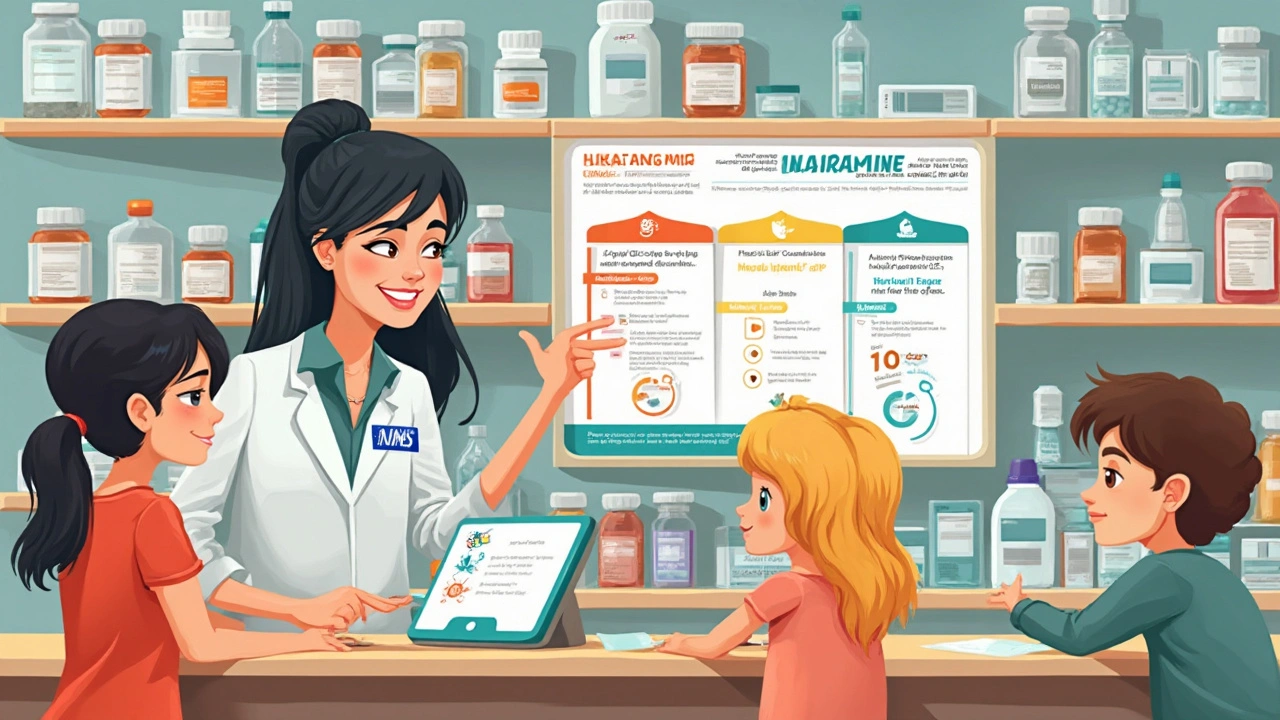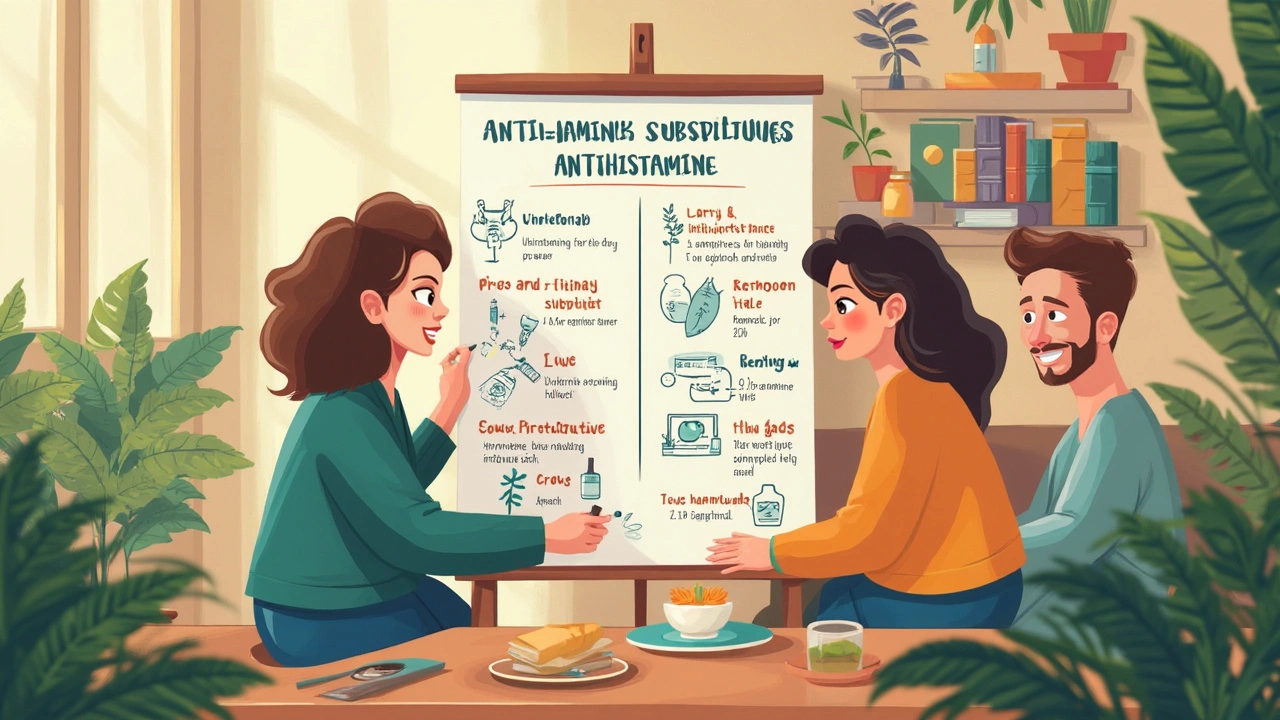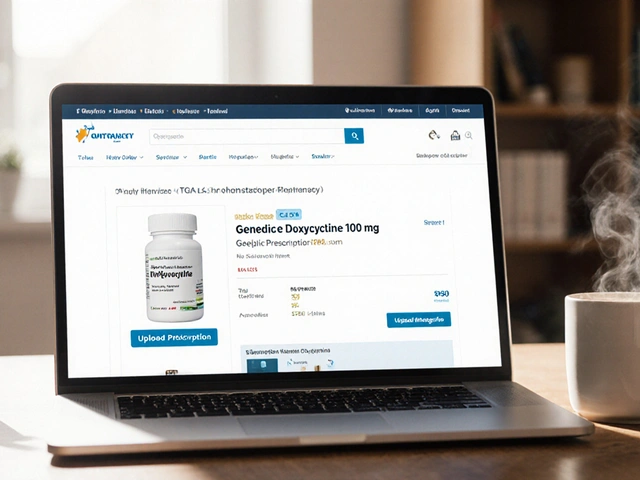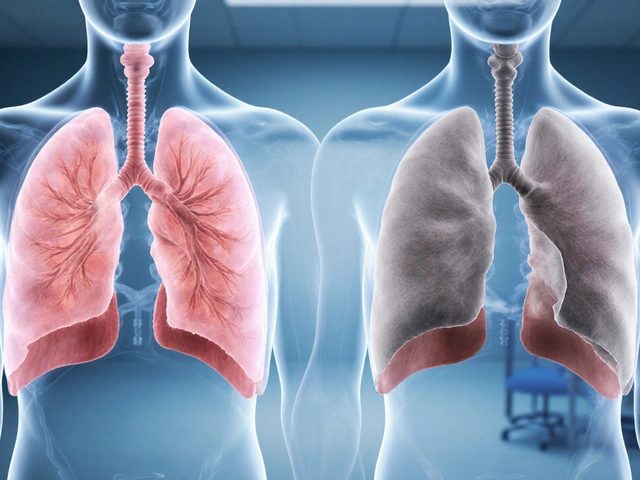Ever wondered why so many people start looking for alternatives to hydroxyzine, especially for their kids? The answer's pretty simple: lots of folks want fast relief from allergies, itching, or anxiety—but they hate grogginess, or they're nervous about giving kids something so sedating. In Adelaide and everywhere else, parents grab over-the-counter (OTC) meds off pharmacy shelves or try herbal options their gran swore by. But finding the best hydroxyzine substitute for kids or adults isn't just about grabbing the next packet of pills. Age, health, and even time of year play a big part. Let's unravel your options with the facts, not myths, guiding us.
Comparing OTC Antihistamines: Age-Specific Dosing and Pros & Cons
Not all antihistamines are created equal, and a five-year-old can't take the same dose as a twenty-five-year-old. Hydroxyzine is a first-generation antihistamine, loved (or hated) for its ability to knock you out. Nowadays, most folks want relief without the snooze button. The most well-known substitutes fall into two groups: first-generation and second-generation antihistamines.
Here's the lowdown. First-generation options like diphenhydramine (aka Benadryl), chlorpheniramine, and promethazine still hit hard with drowsiness but make good backups for serious itching or hives. Second-generation meds like cetirizine (Zyrtec), loratadine (Claratyne), and fexofenadine (Telfast) are modern favorites. They're much less likely to cause drowsiness and work longer. In fact, fexofenadine is so non-drowsy that airline pilots are allowed to use it, according to Australia's Civil Aviation Safety Authority, which says a lot about its safety message.
Here’s a quick comparison:
| Drug Name | Type | Onset | Duration (hrs) | Common Dose (adults) | Pediatric Dose |
|---|---|---|---|---|---|
| Diphenhydramine | First-gen | 30 min | 4-6 | 25-50 mg 3-4x/day | 1 mg/kg every 6-8 hrs |
| Loratadine | Second-gen | 1 hr | 24 | 10 mg daily | 5 mg (2-5 yrs), 10 mg (6+ yrs) daily |
| Cetirizine | Second-gen | 1 hr | 24 | 10 mg daily | 2.5-5 mg (2-5 yrs), 10 mg (6+ yrs) daily |
| Fexofenadine | Second-gen | 1 hr | 24 | 180 mg daily | 30 mg (2-11 yrs), 60 mg (12+ yrs) daily |
Kids below two years old need extra care with any antihistamine—their livers aren’t fast at breaking down drugs, and even a little too much can cause dangerous side effects. For the under-two crowd, the best advice is: don’t use OTC antihistamines unless a doctor says yes. Even in school-age kids, start low and go slow—if cetirizine lists 5 mg for kids aged 2-5, don't round up to a full tablet. Stick to liquids for easy measuring, and use a dosing syringe, not your kitchen spoon (those are way less accurate than you think).
Adults have wider dosing ranges—though the main worry is drowsiness, especially with first-generation medications. Diphenhydramine works fast, so it's handy for sudden reactions or nighttime itch, but you’ll likely need a nap after. Loratadine and cetirizine, on the other hand, don't mess with your focus so much. For those with hayfever at work or school, non-drowsy is the way to go. One cool fact: A study published in 2023 found that cetirizine taken before bed helped morning symptoms better, but those taking it in the morning felt less sleepy. Time-of-day makes a difference, so try to match it to when you need relief.
Side effects are a clincher. Drowsiness, dry mouth, constipation—they all hit younger kids harder. Some antihistamines interact with antidepressants or antibiotics, so don’t mix and match without checking first. And just because a product is "chewable" or "berry-flavored" doesn’t make it safe for toddlers. Check age labels, and don’t trust TikTok hacks with weird cut-up tablet doses. When in doubt, ask your pharmacist—that’s what they’re there for.

Herbal and Non-Pharmacological Alternatives: Are Home Remedies Truly Safe?
With pharmacy shelves overflowing and social media exploding with “natural” allergy relief recipes, it’s tempting to toss the pill bottle. But can herbs and home hacks actually swap out for hydroxyzine? The answer is complex but not a total no. Some options have decent evidence for mild symptoms or as add-ons, but they’re not magic bullets, especially in severe cases.
Bromelain (from pineapple stems), for example, has some fairly good data showing it can reduce nasal swelling and support sinuses. Local honey has its own cult following for hayfever, with small Australian trials hinting at mild benefits—though the trick is buying honey from your region, not the supermarket shelf. Quercetin, found in apples and onions, acts as a mild natural antihistamine; some folks with mild allergies swear by it, but don’t expect relief from major hives or anaphylaxis.
Here’s a look at typical herbal and natural alternatives:
- Quercetin: Flavonoid from plants. Around 500 mg twice daily for adults; not officially dosed for kids.
- Butterbur (Petasites hybridus): Used for hayfever, though must be “PA-free” to avoid liver toxins. Adult dose: 50 mg twice daily. Not for kids under 12.
- Bromelain: 80–320 mg two or three times daily in adults. Kids: 40 mg twice daily is common, under supervision.
- Black seed (Nigella sativa): 40–80 mg/kg/day; mostly studied in adults, parents should check with a doctor first for kids.
- Saline nasal sprays: Not herbal, but very safe for kids and adults alike to rinse pollens out of noses. No dosing drama here.
- Local honey: 1 tsp daily for adults or school-age kids if no allergies to honey—never for kids under 1 year (risk of botulism).
Don’t fall for “natural is always safe.” Some herbs interact with asthma meds, antibiotics, or even heart drugs. Butterbur, for instance, can hurt your liver if improperly processed. And dosing for kids? It’s usually a grey zone—herb companies rarely do kid-specific studies, so talk to your doctor before starting anything, especially in children under 12.
Here’s the other side: herbal remedies often take longer to kick in. Bromelain or quercetin may need 1-2 weeks for you to decide if they even work. If you or your kid suddenly break out in hives or get a bee sting, don’t waste time with a celery smoothie—reach for a proven med or dial for urgent help.
For stuffy noses, saline sprays or irrigations are easily the safest bet. No chance of overdose, no scary side effects, just plain salt water cleaning out pollen and dust. Nasal sprays with xylitol can help, too, making noses less crusty and ticklish. For itchy skin, plain oat baths (colloidal oatmeal) offer some relief, and a wet compress can reduce that burning patch until proper medicine is in hand.
If you’re heading the DIY route for mild, ongoing symptoms, keep a diary: what works, what doesn’t, when flare-ups happen. Sometimes, it’s not the pollen, but the detergent or even the neighborhood cat. Tweaking your environment (closing windows on high-pollen days, using dust-mite covers on pillows) beats any pill or potion hands-down for prevention. Your doc or pharmacist won’t laugh if you ask for “non-drug” tricks—they’ll probably tell you their own home hacks.

Making Sense of Substitution: When to Switch and How to Do It Safely
Switching from hydroxyzine isn't a one-size-fits-all affair. Why are you switching? Allergy seasons, chronic hives, pre-bedtime anxiety, or “just in case” pills for random rashes? The goal shapes the substitution. You want to swap for a drug or remedy that's right for age, symptoms, and risk tolerance. Here’s the deal: don't try every remedy at once; you’ll never know what worked.
The good news is, alternatives are plenty. For allergies and itching, second-generation antihistamines like loratadine, cetirizine, or fexofenadine are top picks—longer-lasting, less risky for drowsiness, and easy on the wallet as generics. Want to keep things herbal? Quercetin and bromelain are worth trying for daily management—not emergencies. For anxiety or sleep issues that would usually send adults toward hydroxyzine, talk to your GP—you may be better served by other therapies (sometimes even non-drug like cognitive tricks or melatonin for sleep, prescribed for short periods here and there).
For parents, the trickiest part is figuring out what’s safe for their child’s age, and what to do if your kid’s symptoms spiral. The Royal Children's Hospital in Melbourne notes you should call your doc if a rash gets worse, hives last over 24 hours, or there are signs of trouble breathing—don’t just up the dose or try new herbs without advice.
One practical tip: Only buy one new product at a time, and trial it for a week (unless there’s a bad reaction). If you’re moving from a prescription antihistamine to an OTC version, overlap for a day or two if your doctor says it’s safe. Don't stop suddenly if you've been on high doses for anxiety; some folks experience rebound symptoms, especially with sedating meds. Have a written plan for what to use if things get worse (eczema flares, anaphylactic emergencies), and keep emergency numbers on the fridge. Set smartphone reminders for daily doses, so you don’t double-up or skip doses, especially in busy households with kids on allergy meds.
And before you hit “Buy Now” on the next Amazon bestseller or triple-dose a “natural” product, it’s worth reading up on real alternatives. Check reputable guides—like the detailed list at this hydroxyzine substitute page—which breaks down prescription, OTC, and herbal options based on science, not just hype. Plain English facts, no marketing tricks.
Here in Adelaide, pharmacies carry a solid lineup, but choices matter. Always read the fine print on new brands—it’s not unusual for two “different” tablets to have the same main ingredient, so don’t accidentally double-dose. If you’re ever in doubt, pharmacists love showing off their knowledge—it’s honestly the quickest way to get personalized advice on age-specific doses, side effects, and smart substitutions. And when in doubt, trust your gut; if your kid seems off, symptoms worsen, or something feels odd, get help sooner rather than later. Peace of mind beats any quick fix.






Post A Comment